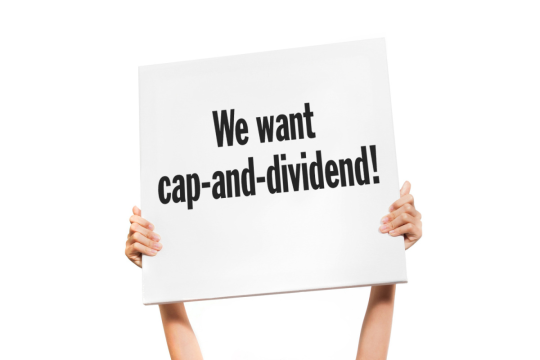by Meghan Demeter | September 1, 2015

California has long been at the forefront of climate protection,
and the state has been something of a testing ground for environmental and
energy legislation. We’ve experienced both successes and failures, and can
learn valuable lessons from both.
The State has already allocated $1.4 billion in auction revenue
from California’s cap and trade system for numerous projects across the state. Much more revenue is anticipated as the system broadens to
include the transportation sector. But is this approach for allocating revenue the
most cost-effective?
First, consider effectiveness in reducing emissions. Though many
of the projects being funded by the cap and trade revenue facilitate green
technology innovation, it begs the question: will this make emissions go
down any faster than just mandating a cap on emissions alone? As
green innovation reduces emissions in one sector – for example, transportation
– that sector will require fewer permits to pollute, therefore freeing up some
permits. When the permit supply increases, price goes down and it becomes
cheaper for other industries to purchase more permits. In other words, the
current system seems to simply shift the right to pollute among industries,
thereby negating the emissions-reductions benefits of the investments.
Next, consider the aspect of fairness. Having the state charge
companies for emitting greenhouse gas will, by design, raise the cost of fossil
fuel. Those who are economically disadvantaged are disproportionately impacted by
this increase in cost. Although 25% of Cap and Dividend revenues are earmarked
for economically disadvantaged communities, this is not as powerful of an
offset for them as dividends would be.
Another aspect of fairness is people’s right to any income
associated with wealth that we create or inherit together, as Peter Barnes
explains in With Liberty and Dividends for All. The atmosphere is an
example of this shared wealth. When we charge for the emissions that are
harming our society, the revenue doesn’t belong to any one person–or even to
any one government. Rather it belongs to the people as a whole. Thus, that
money should be distributed as an equal dividend to all.
Another criterion for evaluating the allocation of revenues is the
importance of building political support for the Cap and Trade system. Although
Californians currently receive a biyearly climate dividend of about $35 as a
credit buried in their electricity bills, the relative invisibility of the
climate credit jeopardizes the entire system. Because very few people know they
are benefitting, political will is not being built to keep the system in place.
Contrast California’s approach to dividends with Alaska’s
successful example. The Alaska Permanent Fund writes a yearly check to every
Alaska resident. In 2014, this amounted to $1,884 per person. The off-bill
check is a tangible reminder of a policy that benefits every Alaskan. As a
result, there has never been a serious political challenge to the fund, and to
do so is now considered political suicide.
Dividends could function as a source of basic income, a type of
universal welfare that has been advocated for by economists and politicians on
both sides of the political spectrum. Furthermore, dividends are among the most
effective methods of increasing income equality. Once again, Alaska exemplifies
the impact that a successful dividend system can have; it is among the top
states for income equality.
It is rare that a single policy can address two important issues,
but cap and dividend has the potential to ameliorate both climate change and
income inequality.
Momentum is building, as bills in both Oregon and the U.S. Congress
are calling for cap and dividend as the next step in the environmental
movement. Representative Van Hollen has sponsored The Healthy Climate and Family Security Act, proposing cap and dividend on a national level, while Oregon Climate is in the midst of a campaign to institute the system in Oregon.
California has another opportunity to be a national leader in
environmental policy. The California Air Resources Board is currently updating its
investment plan for Cap and Trade revenues. The state should use this
opportunity to expand the climate credit and create an equal, off-bill climate
dividend. Through this, California could show how a cap and dividend system can
make the country a greener, more equitable place.
Make your
voice heard. Sign
our petition to tell the California Air Resources Board that you support
cap and dividend. We’ll submit comments on Thursday, September 3.
Learn more:
–
Meghan Demeter is an intern with The Climate Center. She will be entering her senior year at Western Washington University, double-majoring in Environmental Economics and French with a minor in Energy Policy.